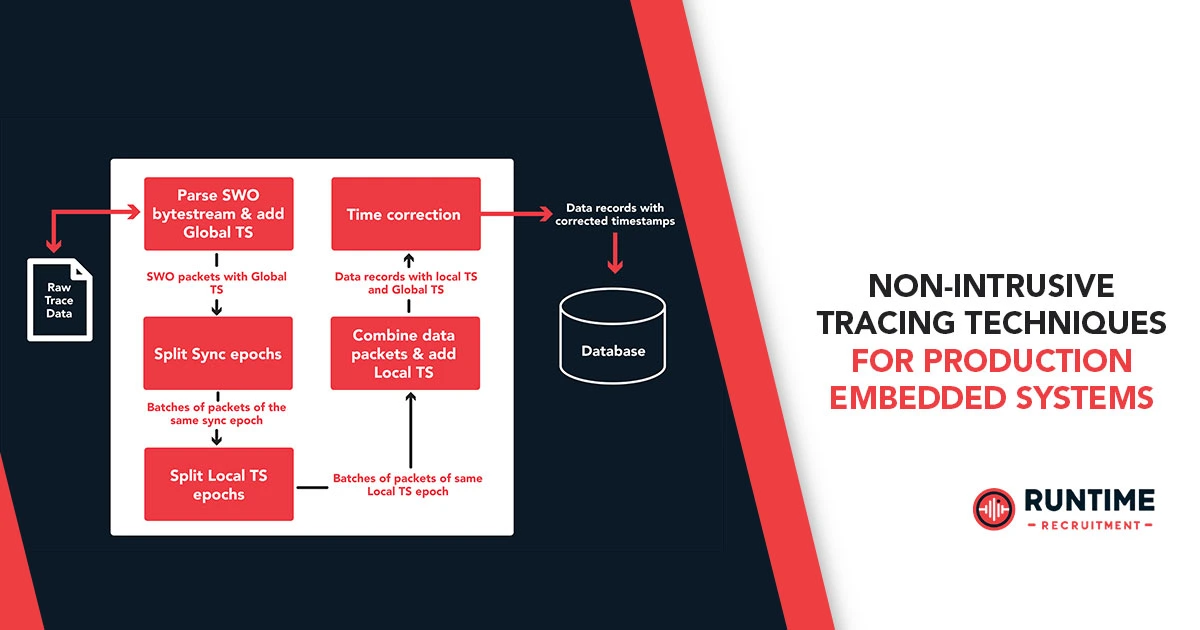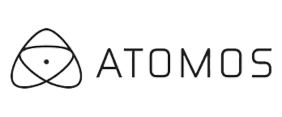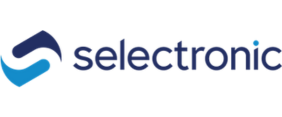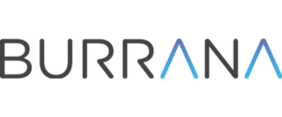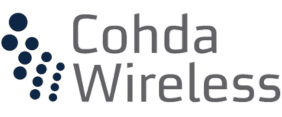Embedded systems, the silent workhorses of our modern world, power everything from medical devices and industrial robots to smart home gadgets and automotive electronics. Their reliability is paramount, yet their inherent complexity and often resource-constrained nature make debugging and performance optimization a continuous challenge. While traditional debugging methods like breakpoints and printf statements are invaluable during development, they often fall short or become outright detrimental when dealing with production systems. This is where non-intrusive tracing techniques emerge as a powerful, often indispensable, solution.
For embedded engineers, the transition from a controlled development environment to a deployed production system often feels like stepping into a black box. The very act of instrumenting code for debugging can alter timing, consume precious resources, and even mask the very bugs you’re trying to find – a phenomenon known as the “probe effect.” Non-intrusive tracing aims to peel back this curtain, offering deep insights into system behavior without altering its fundamental operation, making it ideal for diagnostics, performance analysis, and even predictive maintenance in the field.
The Problem with Intrusion: Why Production Systems Demand a Delicate Touch
Consider a real-time embedded system, say, an engine control unit (ECU) in a vehicle. Introducing debug print statements or pausing execution with breakpoints can disrupt critical timing loops, leading to unpredictable behavior, missed deadlines, or even system crashes. The memory footprint of debugging code can exceed available resources, and the added execution cycles can significantly impact performance, especially in systems with tight power budgets or stringent latency requirements.
Furthermore, production systems often run optimized code, making symbolic debugging challenging. The target hardware might lack the necessary debug interfaces, or they may be disabled for security or cost reasons. This “release build” environment necessitates a different approach – one that can observe the system as it truly behaves, without interference.
The Core Philosophy of Non-Intrusive Tracing
At its heart, non-intrusive tracing is about observing rather than interfering. It’s about capturing a faithful record of a system’s execution without modifying its core code, its memory footprint, or its timing characteristics. This is a critical distinction, especially for real-time and safety-critical applications where even minor perturbations can have catastrophic consequences.
The techniques employed to achieve this non-intrusiveness generally fall into two broad categories: hardware-assisted tracing and minimally-intrusive software-based tracing. Both have their strengths and weaknesses, and the optimal choice often depends on the specific microcontroller, system architecture, and debugging goals.
Hardware-Assisted Tracing: The Gold Standard for Deep Insight
Hardware-assisted tracing leverages dedicated debug and trace capabilities built directly into modern microcontrollers and System-on-Chips (SoCs). These capabilities are designed to capture a wealth of information at the instruction level, with minimal to zero impact on the running application.
1. Embedded Trace Macrocell (ETM) and Program Trace Macrocell (PTM)
For ARM Cortex-M, R, and A processors, the Embedded Trace Macrocell (ETM) and Program Trace Macrocell (PTM) are prime examples of hardware-assisted tracing. These dedicated IP blocks capture instruction execution flow, including branches, function calls, returns, and even timestamps.
- How it works: The ETM/PTM continuously monitors the processor’s execution pipeline. As instructions are fetched and executed, a compressed trace stream is generated. This stream is then typically output through a dedicated trace port (e.g., MIPI Parallel Trace Interface – PTI, or Serial Wire Debug – SWD with Trace (SWO)).
- Key advantages:
- True Non-Intrusiveness: The application code remains completely unmodified. There’s no added software overhead, ensuring the system behaves exactly as it would in production.
- Instruction-Level Detail: Provides a precise, cycle-accurate record of code execution, allowing for deep analysis of control flow, race conditions, and timing anomalies.
- Real-time Capture: Trace data is captured as events occur, offering a genuine “snapshot” of real-time behavior.
- Comprehensive Coverage: Can track execution across multiple tasks, interrupts, and even different processor cores in multicore systems.
- Challenges:
- Hardware Requirements: Requires specific trace pins and connectors on the target board, which might be omitted in cost-optimized production designs.
- High Data Rates: The raw trace data can be voluminous, necessitating high-speed trace probes and significant storage capacity on the host PC.
- Complex Toolchains: Requires specialized debuggers and trace analysis software (e.g., Lauterbach TRACE32, SEGGER J-Trace, ARM DSTREAM) which can be expensive and have a steep learning curve.
- Limited Trace Buffer: On-chip trace buffers are often small, limiting the duration of the trace capture unless an external trace probe with larger memory is used.
2. Logic Analyzers and Oscilloscopes (External Hardware)
While not strictly “on-chip” tracing, logic analyzers and high-speed oscilloscopes are invaluable for non-intrusively observing system behavior at the hardware signal level.
- How it works: These instruments connect directly to the physical pins of the microcontroller or other components (e.g., GPIOs, SPI, I2C, UART lines). They capture voltage changes over time, allowing engineers to decode communication protocols, measure timing relationships, and observe the state of specific signals.
- Key advantages:
- Absolute Non-Intrusiveness: No modification to software or firmware is required.
- Hardware-Level Insights: Ideal for debugging low-level hardware-software interactions, peripheral issues, and signal integrity problems.
- Protocol Decoding: Many modern logic analyzers offer built-in decoders for common communication protocols, making it easy to interpret captured data.
- Triggering and Filtering: Advanced triggering mechanisms allow engineers to capture specific events or sequences of events, focusing on the problem area.
- Challenges:
- Limited Software Context: Provides raw signal data, requiring manual correlation with software execution. It’s difficult to directly see what specific lines of code caused a particular signal change.
- Probe Placement: Requires physical access to signals, which can be challenging on compact production PCBs.
- Data Volume: High sampling rates can generate massive amounts of data, making analysis cumbersome.
- Cost: High-performance logic analyzers and oscilloscopes can be significant investments.
3. Power Analysis / Side-Channel Analysis
An emerging and highly non-intrusive technique involves analyzing the power consumption or electromagnetic (EM) emissions of the embedded system to infer its internal state and execution flow.
- How it works: Every instruction executed by a microcontroller consumes a unique pattern of power. By precisely measuring the instantaneous power consumption (e.g., across a shunt resistor in the power supply line) or EM emissions, sophisticated algorithms can correlate these “power traces” with the expected power profiles of known code sequences. This technique, often borrowed from cryptography and security analysis, allows for reverse-engineering the executed program flow.
- Key advantages:
- Extreme Non-Intrusiveness: No hardware modifications to the target system are required beyond potentially adding a current sensing resistor in the power path for measurement.
- Post-Deployment Analysis: Can be applied to systems already deployed in the field, even those with disabled debug ports.
- Security Implications: Also used in security analysis to identify vulnerabilities.
- Challenges:
- Complexity and Setup: Requires specialized hardware for high-fidelity power/EM measurement and advanced signal processing and pattern recognition algorithms.
- Training Phase: Often necessitates a “training” or “profiling” phase where known code segments are executed and their power profiles are recorded to build a database for later comparison.
- Sensitivity to Noise: Environmental noise and variations in hardware can make accurate correlation challenging.
- Limited Granularity: May not provide instruction-level detail but rather block-level or function-level insights.
Minimally-Intrusive Software-Based Tracing: Smart Instrumentation
While “non-intrusive” often implies no software modification, a practical definition for production systems sometimes includes techniques that add minimal, carefully controlled instrumentation. The goal here is to reduce the “probe effect” to an acceptable level.
1. Lightweight Event Logging to Dedicated Buffers
Instead of full printf strings, which can be very heavy, this technique involves logging small, fixed-size event IDs and associated data into a dedicated in-memory buffer.
- How it works:
- Macro-based Instrumentation: Use preprocessor macros (#define) to replace debug statements with highly optimized function calls or inline assembly that writes a small event ID and relevant data (e.g., a timestamp, a variable value) to a circular buffer.
- Dedicated Buffer: Allocate a specific region of memory for the trace buffer.
- Out-of-Band Extraction: When needed, the trace data can be extracted using a debugger (JTAG/SWD) without stopping the system, or periodically sent over a low-bandwidth communication channel (e.g., UART, unused CAN bus, custom diagnostic port) during idle times.
- Host-Side Decoding: A host application then decodes these event IDs into meaningful messages based on a symbol table or a predefined dictionary.
- Key advantages:
- Reduced Overhead: Minimal code size and execution time overhead compared to full printf.
- Selective Tracing: Macros can be conditionally compiled in or out, allowing instrumentation to be present in the codebase but only active in specific build configurations (e.g., “production debug”).
- Customizable Data: Can log any relevant internal state or event.
- Works on Most MCUs: Less dependent on sophisticated hardware trace capabilities.
- Challenges:
- Still an Intrusion: While minimal, it’s still a modification to the code path, potentially altering timing in extremely sensitive systems.
- Buffer Management: Careful management of the circular buffer is needed to prevent overflows or data loss.
- Data Latency: Data extraction might not be truly real-time if relying on periodic transmission.
- Host-Side Processing: Requires a robust host-side application for decoding and visualization.
- Symbol Correlation: Mapping logged event IDs back to specific source code locations requires careful design.
2. RTOS-Aware Tracing (e.g., SEGGER SystemView, Percepio Tracealyzer)
Many modern RTOSes (Real-Time Operating Systems) offer built-in hooks or mechanisms for non-intrusive kernel tracing. Tools like SEGGER SystemView and Percepio Tracealyzer leverage these hooks.
- How it works: The RTOS itself is lightly instrumented to log events such as task switches, semaphore operations, mutex accesses, interrupt entries/exits, and timer expirations. These events are captured in a dedicated buffer (often in RAM) and can then be streamed out via a debug probe (e.g., J-Link’s SWO, or a dedicated high-speed trace probe) or extracted post-mortem. The host-side tool then visualizes these events on a timeline, providing deep insights into scheduling, task interactions, and system responsiveness.
- Key advantages:
- RTOS-Specific Insights: Provides unparalleled visibility into RTOS behavior, crucial for debugging priority inversions, deadlocks, and task starvation.
- Minimal Intrusion: The instrumentation is typically very small and highly optimized by the RTOS vendor, with negligible impact on performance.
- Visual Analysis: The timeline visualizations make it easy to understand complex real-time behavior.
- Debugging Intermittent Issues: Can capture long periods of operation, helping to pinpoint intermittent bugs that are hard to reproduce.
- Challenges:
- RTOS Dependency: Relies on the specific RTOS having built-in tracing capabilities.
- Probe Bandwidth: Streaming high-frequency events can still saturate lower-bandwidth debug interfaces (e.g., SWO).
- Licensing: Commercial RTOS tracing tools can be expensive.
3. Static Binary Instrumentation (SBI)
This advanced technique modifies the compiled binary directly, inserting trace points without requiring changes to the source code.
- How it works: A tool analyzes the compiled executable or library and injects lightweight code (e.g., jump instructions to a tracing function) at strategic points, such as function entry/exit, memory accesses, or specific instructions. This modification happens after compilation, allowing for non-intrusive tracing of optimized code.
- Key advantages:
- No Source Code Modification: Original source code remains untouched.
- Post-Compilation: Can be applied to binaries where source code is unavailable or to production builds.
- Granular Control: Instrumentation can be highly selective, targeting only specific functions or code regions.
- Challenges:
- Complexity: Developing and using SBI tools is highly complex and requires deep knowledge of binary formats and processor architectures.
- Tool Availability: Limited commercial or open-source tools for specific embedded platforms.
- Potential for Instability: Improper instrumentation can corrupt the binary.
- Overhead: While minimal, some overhead is still incurred by the injected code.
Choosing the Right Non-Intrusive Tracing Technique
The choice of tracing technique for production embedded systems is a strategic one, balancing the need for deep insight with the imperative of non-intrusiveness. Here’s a quick guide:
- For pure instruction-level, real-time fidelity on modern ARM systems: ETM/PTM is the ideal choice, provided the hardware support and budget are available.
- For low-level hardware-software interaction and protocol debugging: Logic Analyzers and Oscilloscopes are indispensable.
- For understanding RTOS scheduling and task behavior: RTOS-aware tracing tools offer excellent visual insights with minimal overhead.
- For custom event logging with minimal code impact: Lightweight event logging to dedicated buffers provides a flexible and widely applicable solution.
- For highly sensitive systems where any software modification is unacceptable, or for post-deployment analysis: Explore power/side-channel analysis, though this is a more specialized and complex area.
- For analyzing optimized binaries without source code changes: Static Binary Instrumentation can be powerful but is generally for advanced use cases.
Best Practices for Implementing Non-Intrusive Tracing
Regardless of the chosen technique, a few best practices can maximize the effectiveness of non-intrusive tracing:
- Design for Observability from Day One: Incorporate trace headers, debug interfaces, and dedicated trace buffers into your hardware and software architecture from the initial design phases. It’s far harder to retrofit these later.
- Conditional Compilation: Use preprocessor directives (e.g., #ifdef DEBUG_TRACE) to enable/disable tracing functionality. This ensures that production builds are truly free of tracing overhead if not needed.
- Minimize Data, Maximize Context: Log only the most essential data points. Instead of verbose strings, use compact event IDs, timestamps, and numeric values. Decode the full context on the host side.
- Consider Trace Buffering and Offloading: Plan how trace data will be stored (circular buffer, dedicated memory) and how it will be offloaded from the target (JTAG/SWD, UART, network).
- Synchronization is Key: For distributed systems or when correlating hardware and software traces, accurate timestamping and synchronization mechanisms are crucial.
- Leverage Visualization Tools: Raw trace data is overwhelming. Invest in or develop tools that can visualize trace events on a timeline, filter data, and highlight anomalies.
- Test Your Tracing Solution: Just like any other part of your system, your tracing implementation should be thoroughly tested to ensure it’s accurate and truly non-intrusive.
- Security Considerations: If trace data contains sensitive information, ensure it is handled securely, especially if offloaded over insecure channels.
The Future of Non-Intrusive Tracing
As embedded systems grow in complexity, integrating AI/ML capabilities, becoming increasingly distributed, and operating in highly dynamic environments, the need for robust non-intrusive tracing will only intensify. We can expect to see advancements in:
- Integrated Observability Platforms: More holistic solutions that combine hardware trace, software event logging, and system-level metrics into a unified view.
- AI-Powered Anomaly Detection: Leveraging machine learning to automatically analyze massive trace logs and identify deviations from normal behavior, reducing the burden on engineers.
- Remote Tracing and Diagnostics: Enhanced capabilities for capturing and analyzing trace data from deployed systems over secure network connections, enabling proactive maintenance and rapid incident response.
- Virtual Prototypes and Simulation: Closer integration of non-intrusive tracing with simulation environments, allowing for early-stage debugging and performance validation.
Conclusion
For embedded engineers navigating the intricate world of production systems, non-intrusive tracing is not merely a convenience; it’s a strategic imperative. By providing a window into the otherwise opaque behavior of deployed devices, these techniques empower engineers to diagnose elusive bugs, optimize performance, and ensure the unwavering reliability that is the hallmark of well-engineered embedded systems. Embracing these advanced methodologies is key to unlocking the full potential of complex embedded designs and delivering robust, high-performing products to the market.

